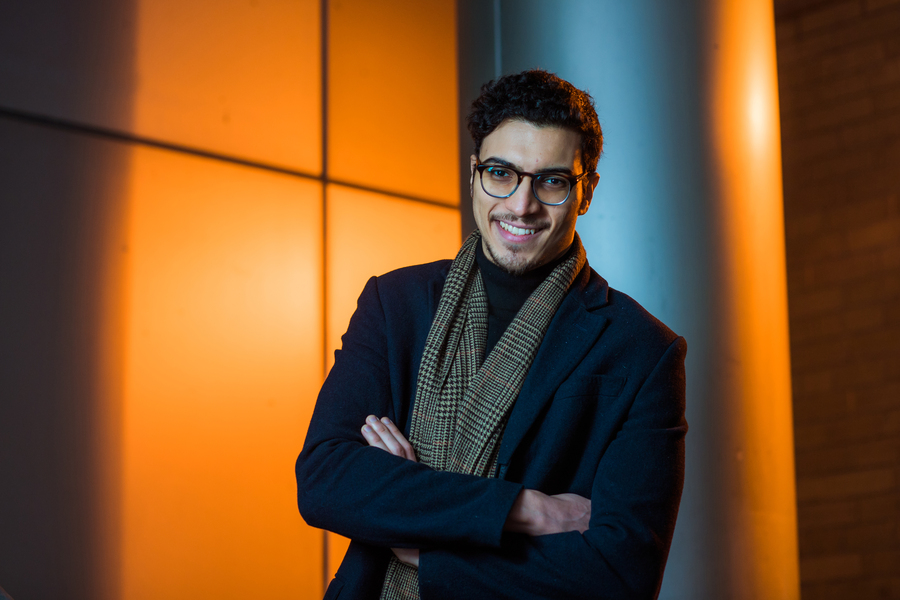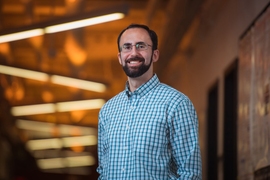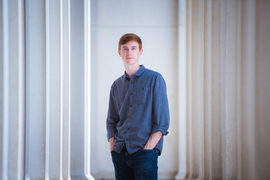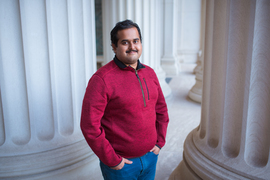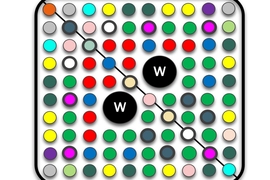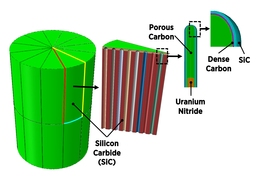Assil Halimi has loved science since he was a child, but it was a singular experience at a college internship that stoked his interest in nuclear engineering. As part of work on a conceptual design for an aircraft electric propulsion system, Halimi had to read a chart that compared the energy density of various fuel sources. He was floored to see that the value for uranium was orders of magnitude higher than the rest. “Just a fuel pellet the size of my fingertip can generate as much energy as a ton of coal or 150 gallons of oil,” Halimi points out.
Having grown up in Algeria, in an economy dominated by oil and gas, Halimi was always aware of energy’s role in fueling growth. But here was a source that showed enormous potential. “The more I read about nuclear, the more I saw its direct relationship with climate change and how nuclear energy can potentially replace the carbonized economy,” Halimi says. “The problem we’re dealing with right now is that the source of energy is not clean. Nuclear [presented itself] as an answer, or at least as a promise that you can dig into,” he says. “I was also seeing the electrification of systems and the economy evolving.”
A tectonic shift was brewing, and Halimi wanted in.
Then an electrical engineering major at the Institut National des Sciences Appliquées de Lyon (INSA Lyon), Halimi added nuclear engineering as a second major. Today, the second-year doctoral student at MIT's Department of Nuclear Science and Engineering (NSE) has expanded on his early curiosity in the field and researches methods of improving the design of small modular reactors. Under Professor Koroush Shirvan’s advisement, Halimi also studies high burnup fuel so we can extract more energy from the same amount of material.
A foot in two worlds
The son of a computer engineer father and a mother who works as a judge, Halimi was born in Algiers and grew up in Cherchell, a small town near the capital. His interest in science grew sharper in middle school; Halimi remembers being a member of the astronomy club. As a middle and high schooler, Halimi traveled to areas with low light pollution to observe the night skies.
As a teenager, Halimi set his goals high, enrolling in high school in both Algeria and France. Taking classes in Arabic and French, he found a fair amount of overlap between the two curricula. The divergence in the nonscientific classes gave Halimi a better understanding of the cultural perspectives. After studying the French curriculum remotely, Halimi graduated with two diplomas. He remembers having to take two baccalaureate exams, which didn’t bother him much, but he did have to miss viewing parts of the 2014 World Cup soccer tournament.
A multidisciplinary approach to engineering
After high school, Halimi moved to France to study engineering at INSA Lyon. He elected for a major in electrical engineering and, ever the pragmatist, also signed up for a bachelor’s degree in math and economics. “You can build a lot of amazing things, but you have to take costs into account to make sure you’re proposing something feasible that can make it in the real world,” Halimi says, explaining his motivation to study economics.
Wrapping up his bachelor’s in math and economics in two short years, Halimi decided to pursue a double curriculum in electrical and nuclear engineering during his final year of engineering studies. Since his school in Lyon did not offer the double curriculum, Halimi had to move to Paris to study at The French Alternative Energies and Atomic Energy Commission (CEA), part of the University of Paris-Saclay. The summer before he started, he traveled to Japan and toured the Fukushima nuclear power plant.
Halimi first conducted research at MIT NSE as part of an internship in nuclear engineering when he was still a student in France. He remembers wanting to explore work on reactor design, when an advisor at CEA recommended interning with Shirvan.
Pragmatism in nuclear energy adoption
Halimi’s work at MIT NSE focuses on high burnup fuel assessment and small modular reactor (SMR) design.
Existing nuclear plants have faced stiff competition during the last decade. Improving the fuel efficiency (high burnup) is a potential way of improving the economic competitiveness of the existing reactor fleet. One challenge is that materials degrade when you keep them longer in the reactor. Halimi evaluates fuel performance and safety features of more efficient fuel operation using advanced computer simulation tools. At the 2022 TopFuel Light Water Reactor Fuel Performance Conference, Halimi presented a paper describing strategies to achieve higher burnups. He is now working on journal paper about this work.
Halimi’s research on SMR design is motivated by the industry’s move to smaller plants that take less time to construct. The challenge, he says, is that if you simply make the reactors smaller, you lose the advantages of economies of scale and might end up with a more expensive economic proposal. Halimi’s goal is to analyze how smaller reactors can compensate for economies of scale by improving their technical design. Other advantages stacked in favor of smaller reactors is that they can be constructed faster and in series.
Halimi analyzes the fuel performance, core design, thermal hydraulics, and safety of these small reactors. “One efficient way that I particularly assess to improve their economics is high power density operation,” he says. In late 2021 Halimi published a paper on the relationship between cost and reactor power density in Nuclear Engineering and Design Journal. The research has been featured in other conference papers.
When he’s not working, Halimi makes time to play soccer and hopes to get back into astronomy. “I sold all my gear when I moved from Europe so I need to buy new ones at some point,” he says.
Halimi is convinced that nuclear power will be a serious contender in the energy landscape. “You have to propose something that will make everyone happy,” Halimi laughs when he describes work in nuclear science and engineering.
The work ahead is daunting — “Nuclear power is safe, sustainable, and reliable; now we need to be on time and on budget [to achieve] climate goals” he says — but Halimi is ready. By addressing both the competitiveness of the existing reactors through high burnup fuels and designing the next generation of nuclear plants, he is adopting a dual-pronged approach to make nuclear energy an economical and viable alternative to carbon-based fuels.
